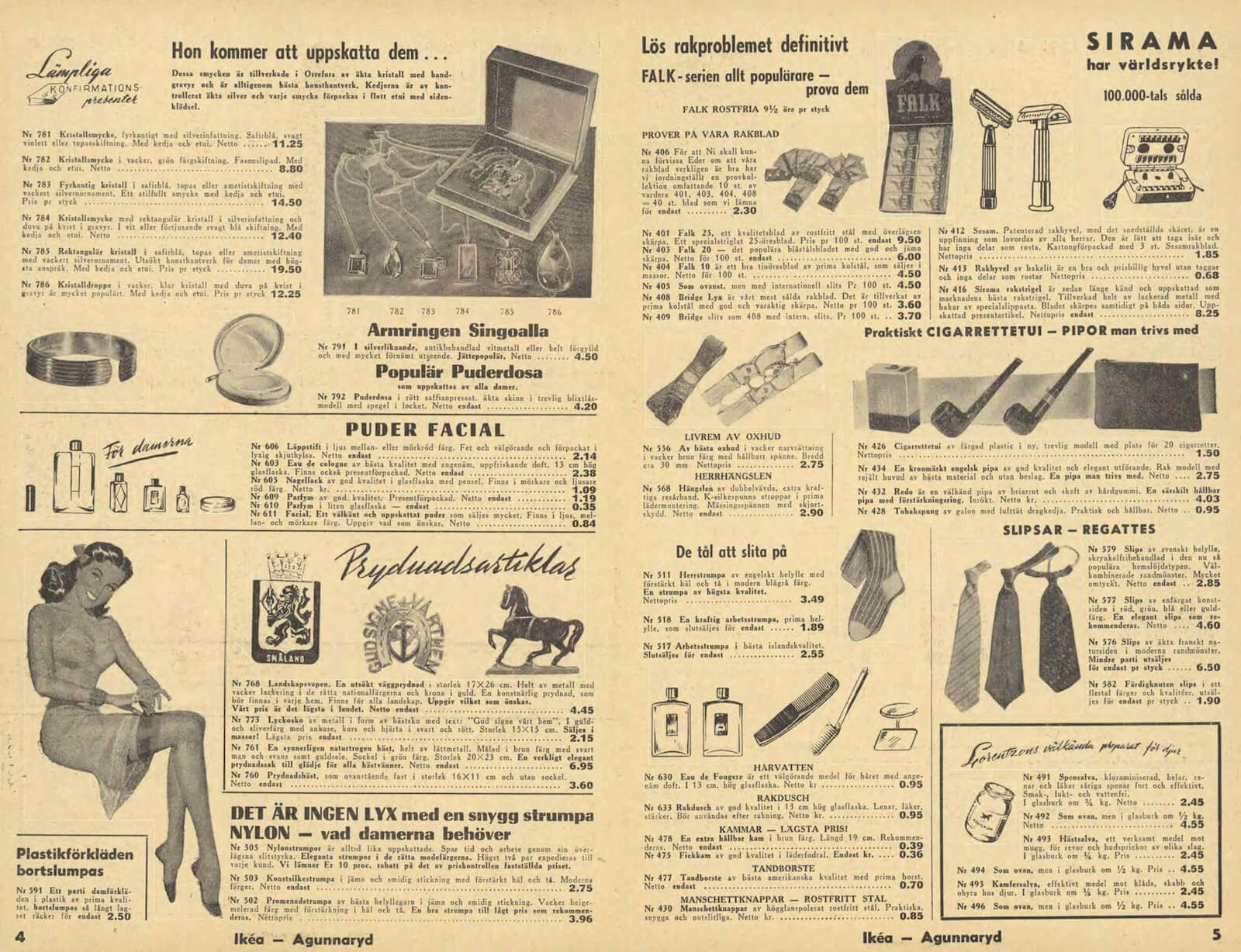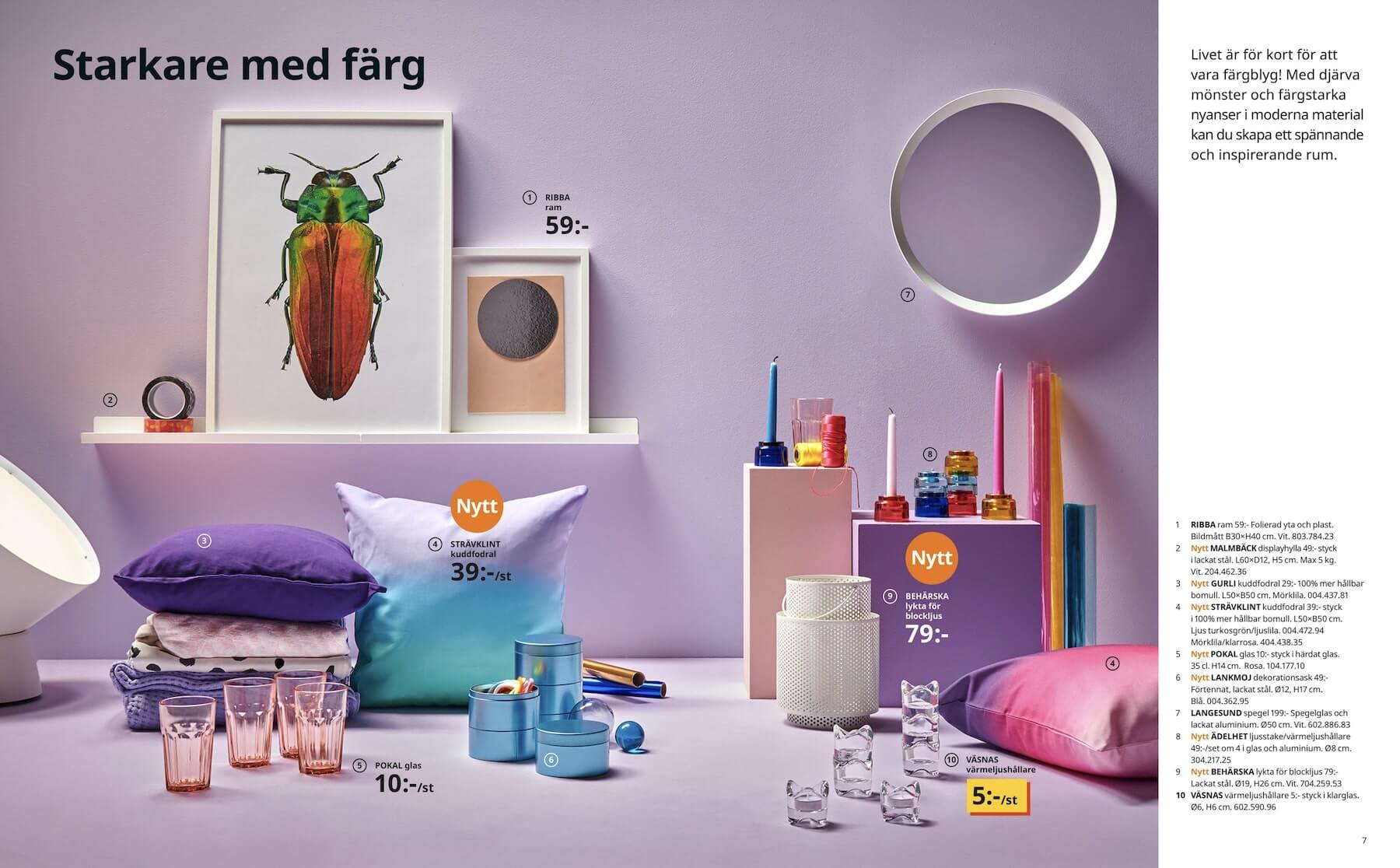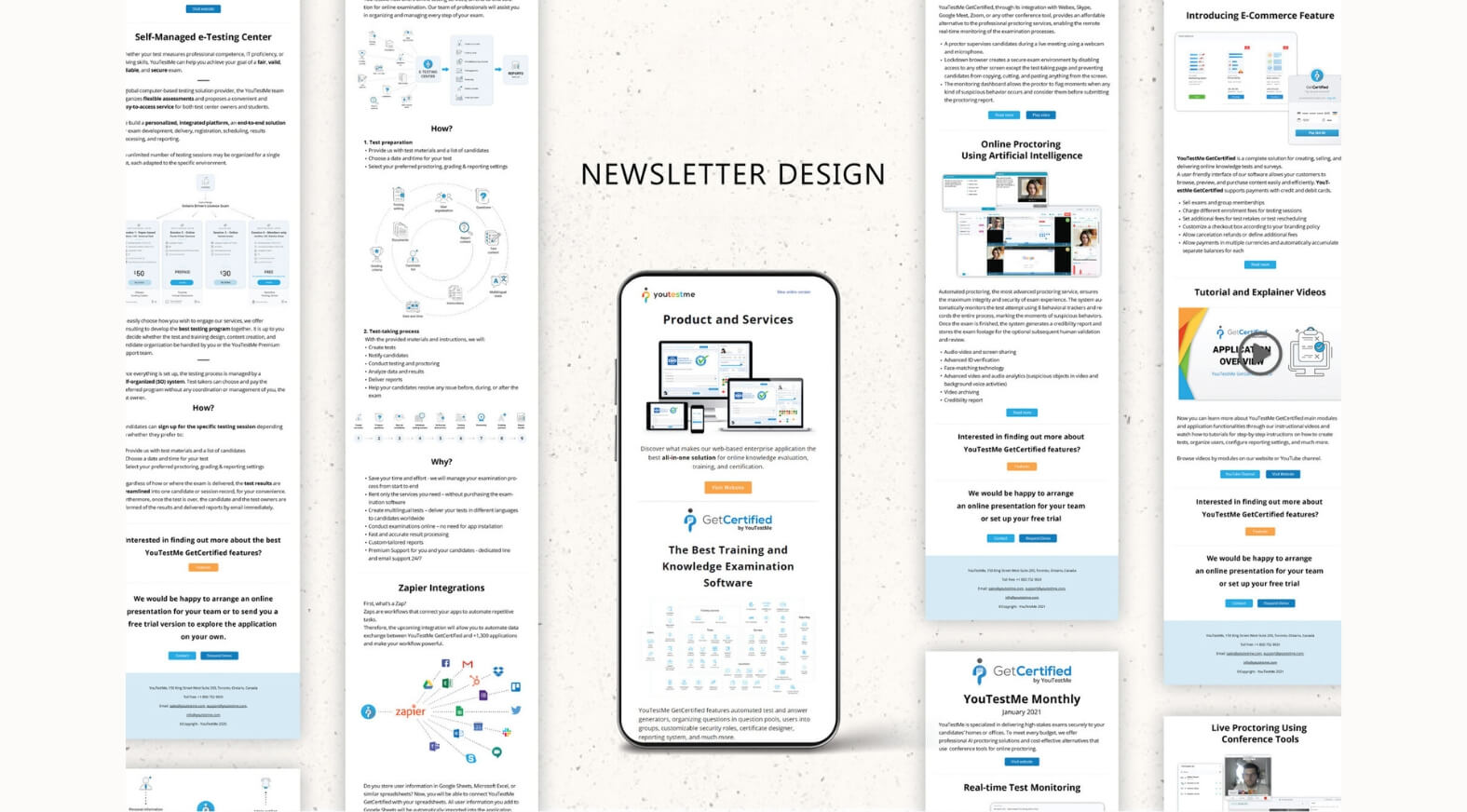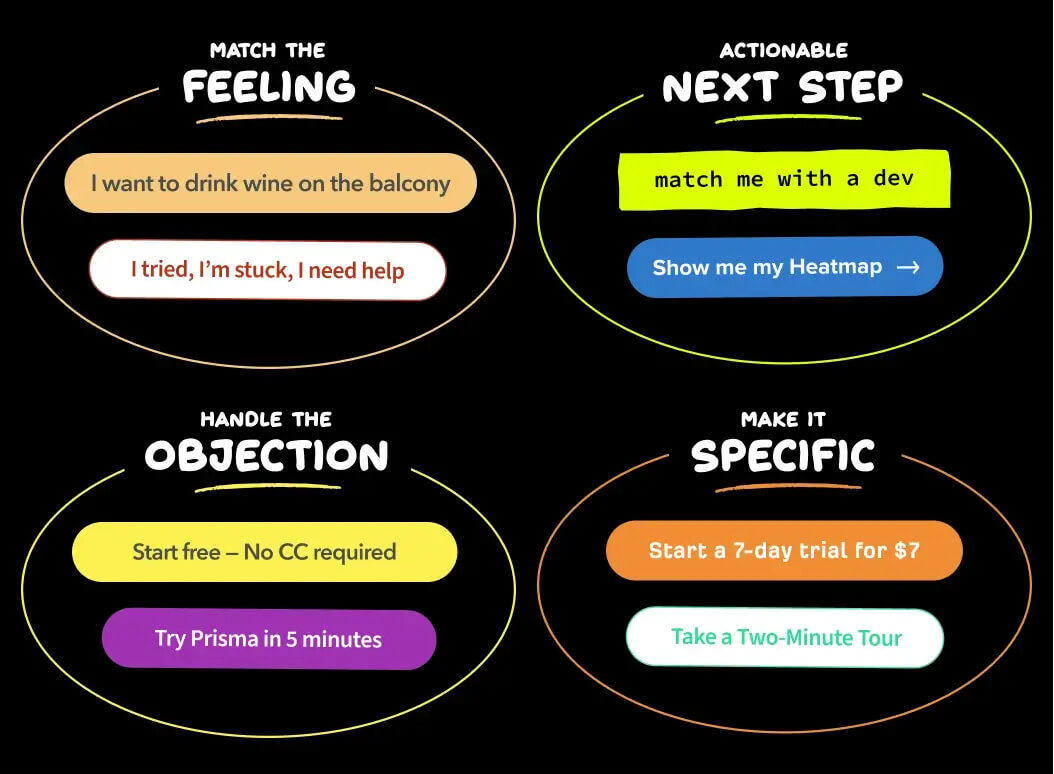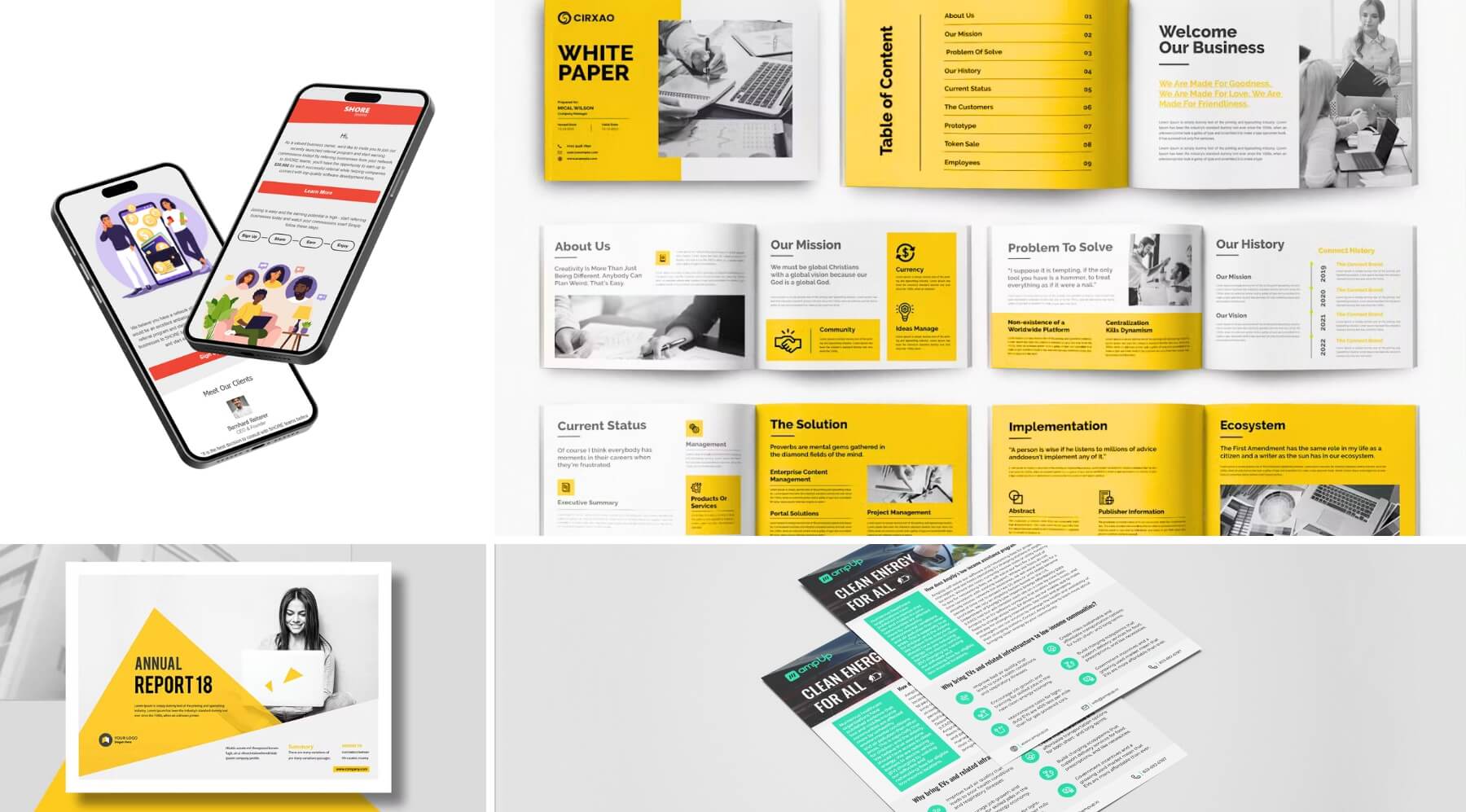
Marketing Collateral 101: Types, Examples, and Design Tips
Table of Contents
Marketing collateral plays an important role in the success of any business’s marketing efforts. From print to digital, the various types of marketing collateral serve as powerful tools to engage and attract customers.
Understanding key components and design principles of effective marketing collateral is essential for creating impactful and memorable brand experiences.
Let’s explore the key takeaways from our comprehensive guide on marketing collateral:
Key Takeaways
1. Combine Digital and Print: Utilize both digital and print marketing collateral to cover all touchpoints, ensuring a cohesive brand experience across all platforms.
2. Focus on Audience Needs: Tailor your marketing collateral to resonate with your target audience, using insights to guide content creation and design for maximum engagement.
3. Leverage High-Value Content: Position your brand as an authority with informative and valuable content, such as case studies, ebooks, and informative blog posts.
4. Incorporate Interactive Elements: Enhance user engagement with interactive collateral like AR experiences and online calculators, making your brand more memorable.
5. Measure and Adapt: Regularly assess the effectiveness of your marketing collateral with analytics, and be ready to adapt strategies to meet evolving market trends and consumer preferences.
What is Marketing Collateral?

Defining Marketing Collateral
At its core, marketing collateral encompasses a variety of materials designed to support the marketing and sales of a product or service. Historically, this term was associated with printed materials such as brochures and flyers; however, in the digital age, it has expanded to include electronic formats like websites, landing pages, pdf, and email campaigns.
Marketing collateral serves a strategic purpose by conveying key messages and value propositions to potential customers. It’s an integral part of the customer journey, providing touchpoints that educate and persuade.
The essence of marketing collateral lies in its ability to communicate a brand's identity and facilitate the buying process.
Understanding the different types of collateral and their specific uses is crucial for any marketing strategy. Here’s a simple breakdown:
- Print Collateral: Traditional forms like brochures, flyers, and business cards.
- Digital Collateral: Modern formats such as ebooks, infographics, pdf, landing pages, and email templates.
- Event Collateral: Materials for trade shows and conferences, including banners and giveaway items.
The Evolution of Marketing Collateral: A Case Study
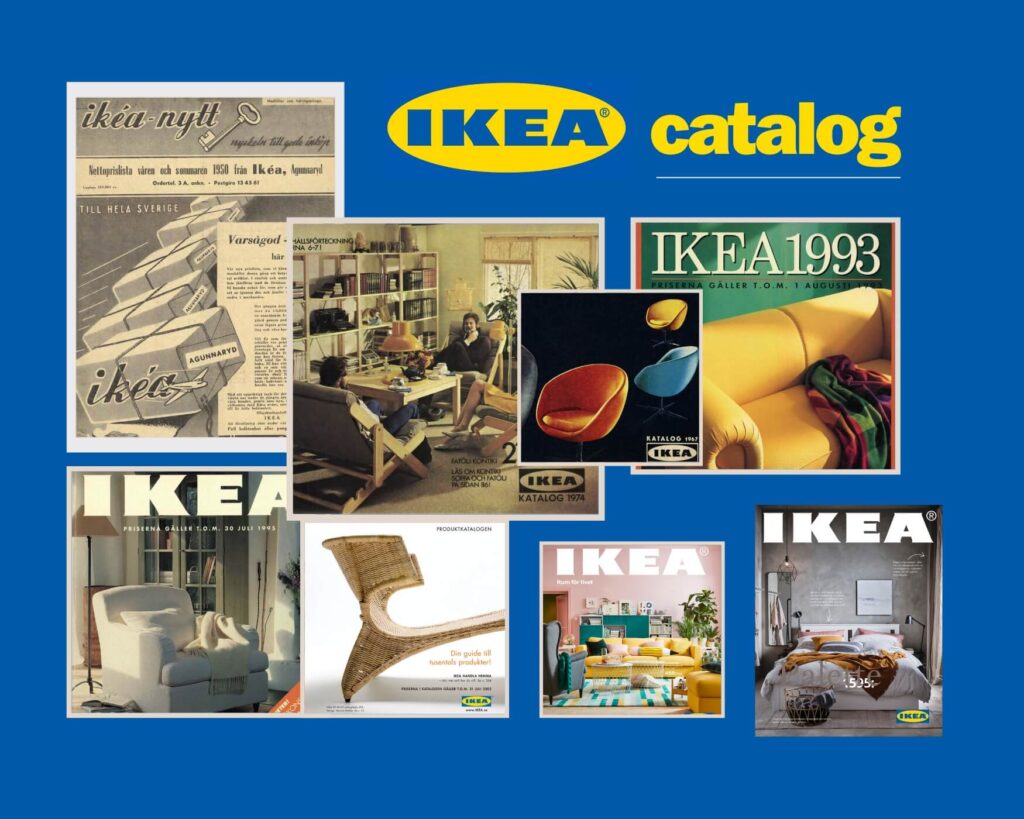
From Print to Digital: IKEA's Innovative Journey
IKEA’s approach to marketing collateral offers a fascinating glimpse into how adapting to technological changes and consumer behavior can significantly enhance brand communication and customer engagement. Known for its iconic print catalogs that have been a staple since 1950, IKEA has masterfully transitioned into the digital age, embracing new formats and channels to reach its global audience.
The Birth and Evolution of the IKEA Catalog
Early Beginnings: Starting in the 1950s, Ingvar Kamprad himself penned most of the catalog’s texts, laying the foundation for what would become a significant aspect of IKEA’s brand identity. These early catalogs were more than just product listings; they were a glimpse into the vision and values of IKEA.
Adapting Through Decades: Through the vibrant and somewhat radical 1970s to the more minimalist approach of the 2000s, the IKEA catalog consistently reflected the spirit of the time. It grew in number, scope, and distribution, reaching millions of homes worldwide and becoming a beloved feature of the brand.
Transition to Digital
The Final Print Edition: Marking the end of an era, the 2021 IKEA catalog was the last to be printed on paper. This decision underscored IKEA’s commitment to sustainability and its pivot towards digital platforms, recognizing the changing consumer behaviors and the environmental impact of print production.
Embracing Digital Innovation
Digital Catalogs and Augmented Reality: In place of the printed catalog, IKEA has embraced digital technologies to inspire and engage its customers. The digital catalog, along with innovative tools like augmented reality apps, allows customers to visualize IKEA products in their own space, offering a personalized and interactive shopping experience.
Content Marketing and Social Media: IKEA’s digital strategy extends to content marketing and social media, where it continues to share home furnishing inspiration, sustainability initiatives, and design solutions. These platforms allow for a two-way conversation with customers, fostering a community of design enthusiasts and IKEA fans.
Key Takeaway
The story of the IKEA catalog is a testament to the brand's ability to evolve with the times while staying true to its core values. It highlights the importance of adapting marketing collateral to meet current consumer needs and technological possibilities. IKEA's journey from print to digital exemplifies how brands can navigate changes in the marketing landscape, leveraging new platforms and technologies to connect with audiences in meaningful and sustainable ways.
The Strategic Value of Marketing Collateral
As seen from the IKEA catalog case study, marketing collateral is not just a set of promotional materials, but a strategic asset that, when aligned with your business strategy, can significantly enhance brand communication and customer engagement. The strategic deployment of marketing collateral can lead to cost savings, improved brand consistency, and deeper customer engagement.
Here’s how you can ensure your marketing collateral is not just seen but felt and remembered, aligning perfectly with your overarching business goals.
Aligning Marketing Collateral with Business Strategy: A Step-by-Step Approach
Audit Your Existing Collateral
Begin by taking stock of all your current marketing materials, both digital and print. Assess each piece’s effectiveness in terms of brand consistency, message clarity, and current relevance to your target audience.
Identify Your Business Goals
Clearly define your short-term and long-term business objectives. Are you looking to increase brand awareness, drive sales, or enter new markets? Understanding your goals will guide the direction of your marketing collateral.
Map Collateral to the Customer Journey
Analyze your customer journey and identify key touchpoints. Ensure you have collateral that addresses each stage of the journey, from awareness to consideration to decision. This ensures a seamless experience that guides potential customers towards making a purchase or taking a desired action.
Learn how to enhance your marketing and boost sales with effective lead scoring.
Gap Analysis
With your business goals and customer journey in mind, identify any gaps in your current collateral. Are there stages in the customer journey that are under-supported? Do your business goals align with the messages being conveyed in your current collateral?
Content and Design Refresh
Update or create new marketing collateral to fill identified gaps, ensuring that all materials reflect your brand identity and speak directly to your target audience’s needs and preferences. This might involve redesigning existing materials for greater impact or developing new content that better aligns with your strategic goals.
Leverage Technology and Innovation
Consider how technology can enhance the impact of your collateral. For digital materials, explore interactive elements, personalization, and augmented reality. For print materials, think about QR codes that link to digital experiences or innovative printing techniques that make your materials stand out.
Measure and Iterate
Establish metrics to measure the effectiveness of your marketing collateral in achieving your business goals. Use these insights to refine and adjust your strategy over time, ensuring your collateral remains a powerful tool in your marketing arsenal.
Key Takeaway
The strategic value of marketing collateral lies in its ability to convey your brand's message, engage your audience, and drive business outcomes. By aligning your marketing collateral with your business strategy through a deliberate and thoughtful process, you can create a suite of materials that not only look good but also work hard to achieve your business objectives.
Types of Marketing Collateral
Print Collateral: Brochures, Flyers, and Business Cards
Print collateral remains a staple in the marketing toolkit, offering tangible touchpoints for customers. Print collateral refers to any printed marketing materials used to promote a business, which can range from brochures and flyers to business cards. Each type serves a unique purpose in branding and outreach efforts.
When designing print collateral, it’s essential to consider the audience and the message you want to convey. Brochures often provide detailed information about products or services, while flyers are ideal for announcements or special promotions. Business cards, on the other hand, are a personal branding tool that facilitates networking.
The effectiveness of print collateral lies in its ability to leave a lasting impression. A well-designed piece can be a powerful reminder of your brand long after the initial interaction.
Here’s a quick checklist for print collateral design:
- Use high-quality images and graphics
- Ensure clear and legible typography
- Incorporate your brand's color scheme
- Include a clear call-to-action
Remember, the goal is to create materials that not only look professional but also resonate with your target audience.
Digital Collateral: Ebooks, Infographics, and Email Templates
In digital marketing, collateral such as ebooks, infographics, and email templates play a pivotal role in engaging and educating potential customers. Ebooks offer in-depth knowledge and are often used as lead magnets, while infographics distill complex information into visually appealing and easily digestible formats. Email templates, on the other hand, are essential for maintaining consistent communication with your audience.
- Ebooks: Provide comprehensive information and thought leadership.
- Infographics: Simplify complex data, making it accessible.
- Email Templates: Ensure consistent and effective messaging.
When designing digital collateral, focus on the user experience. The content should be easy to navigate and provide real value to the reader.
Email marketing, in particular, requires a blend of creativity and strategy. Blogs like Really Good Emails offer a wealth of real-world examples that showcase successful email campaigns. These resources can be invaluable for understanding the nuances of email design and deliverability. Additionally, tools like MarcomCentral can help organize your digital assets, ensuring that your marketing materials are always ready for deployment.
Unlocking Targeted Reach – Online Ads for Businesses
In the digital landscape, businesses have a myriad of advertising options at their disposal for reaching specific audiences. These options cater to different platforms and formats, offering flexibility and precision.
Search Engine Ads: These are pivotal for reaching users actively searching for products or services like yours. By targeting relevant keywords, businesses can ensure their ads appear prominently on search results pages.
Display Network Ads: This form of advertising showcases visual ads, such as banners or videos, across a vast network of websites. It’s ideal for increasing brand visibility and drawing in potential customers through eye-catching content.
Social Media Advertising: Platforms like Facebook, Instagram, and Snapchat offer dynamic ad formats that engage users with tailored messaging. These platforms utilize user data to target demographic segments, making it easier to connect with a desired audience.
Video Ads: Leveraging the power of platforms that host video content, businesses can engage users through compelling storytelling. Video ads are particularly effective due to their ability to capture attention and convey a message quickly.
Retargeting Ads: These are designed to reach users who have previously interacted with your brand, keeping your business top-of-mind and encouraging them to convert into paying customers.
While online advertising is a powerful tool for business growth, it's essential to budget wisely for the costs associated with creating, placing, and managing these campaigns.
How Do Explainer Videos Help in Marketing Products or Services?
Explainer videos play a crucial role in marketing by demystifying complex products or services in an engaging and digestible format. These videos typically showcase a character encountering a common issue, then demonstrate how the featured product effectively addresses that challenge. This not only makes the content relatable but also emphasizes problem-solving.
Benefits of Explainer Videos
Clarity and Engagement: Short and focused, these videos break down intricate features and benefits into understandable parts, capturing and retaining the audience’s attention.
Visual Appeal: Using animations, screenshots, and screen shares, explainer videos visually illustrate how a product works. This approach helps in simplifying technical details that might otherwise be difficult to communicate through text alone.
Versatile Placement: They can be seamlessly embedded on landing pages, homepages, and shared across platforms like YouTube and social media. This widespread placement increases exposure and reach, facilitating better lead conversion.
Why Businesses Choose Explainer Videos
Explainer videos are favored for their ability to combine storytelling with information delivery. By highlighting a relatable scenario, these videos connect emotionally with viewers, making them more likely to recall the product and its solution. For businesses looking to enhance their marketing efforts, explainer videos offer a dynamic tool to showcase why their offering stands out in the marketplace.
Incorporating explainer videos into your marketing strategy can significantly boost engagement, comprehension, and ultimately, conversion rates.
B2B vs. B2C Marketing Collateral: Understanding the Differences
Understanding the nuanced needs of your target audience is crucial in crafting effective marketing collateral. The distinction between B2B (Business-to-Business) and B2C (Business-to-Consumer) markets demands different approaches in messaging, design, and distribution channels. Here’s how to navigate these differences:
B2B Marketing Collateral
- Messaging: Focus on the logical decision-making process, emphasizing the product’s or service’s ROI, efficiency, and how it solves specific business problems. Content should be detailed, informative, and often technical, catering to the expertise of the professional audience.
- Design: Opt for a more formal and professional aesthetic. Use clean lines, subdued colors, and straightforward layouts that prioritize clarity and ease of information absorption. Infographics and charts that illustrate data points or benefits are particularly effective.
- Distribution Channels: LinkedIn, industry-specific forums, and professional conferences are ideal for distributing B2B collateral. Consider also direct email campaigns that offer whitepapers, case studies, or product demos to potential business clients.
Example:
A comprehensive whitepaper that covers industry trends, supported by case studies showcasing your product's impact on similar businesses, can be a powerful tool in a B2B strategy.
The Importance of a Branded Pitch Deck for Sales Teams
A well-crafted, branded pitch deck is crucial for sales teams aiming to make a strong impression on prospects. Here’s why:
Establishes Professionalism and Credibility
A consistent and polished presentation showcases your company’s professionalism. When each pitch deck reflects your brand’s colors, fonts, and overall design, it signals to the prospect that you’re detail-oriented and serious about your business.Ensures Consistent Messaging
Having a standardized deck prevents discrepancies in the information conveyed by different team members. It ensures every pitch aligns with your company’s core values and goals, thereby avoiding mixed messages that can confuse potential clients.Reinforces Brand Identity
A branded pitch deck serves as a visual representation of your company. By consistently utilizing your brand’s visuals, you enhance memory retention and recognition among prospects, which can be pivotal in decisions that involve comparing multiple options.Facilitates Better Engagement
With a cohesive design, your sales team can focus more on interacting with prospects rather than worrying about inconsistent designs or outdated information. Aesthetically pleasing decks hold attention longer, encouraging dialogue and engagement.Enhances Adaptability
A quality pitch deck provides a flexible foundation for customization. Once you have a standardized template, it’s easier to tailor sections of the deck to meet the specific needs of different clients, without losing the core brand identity.
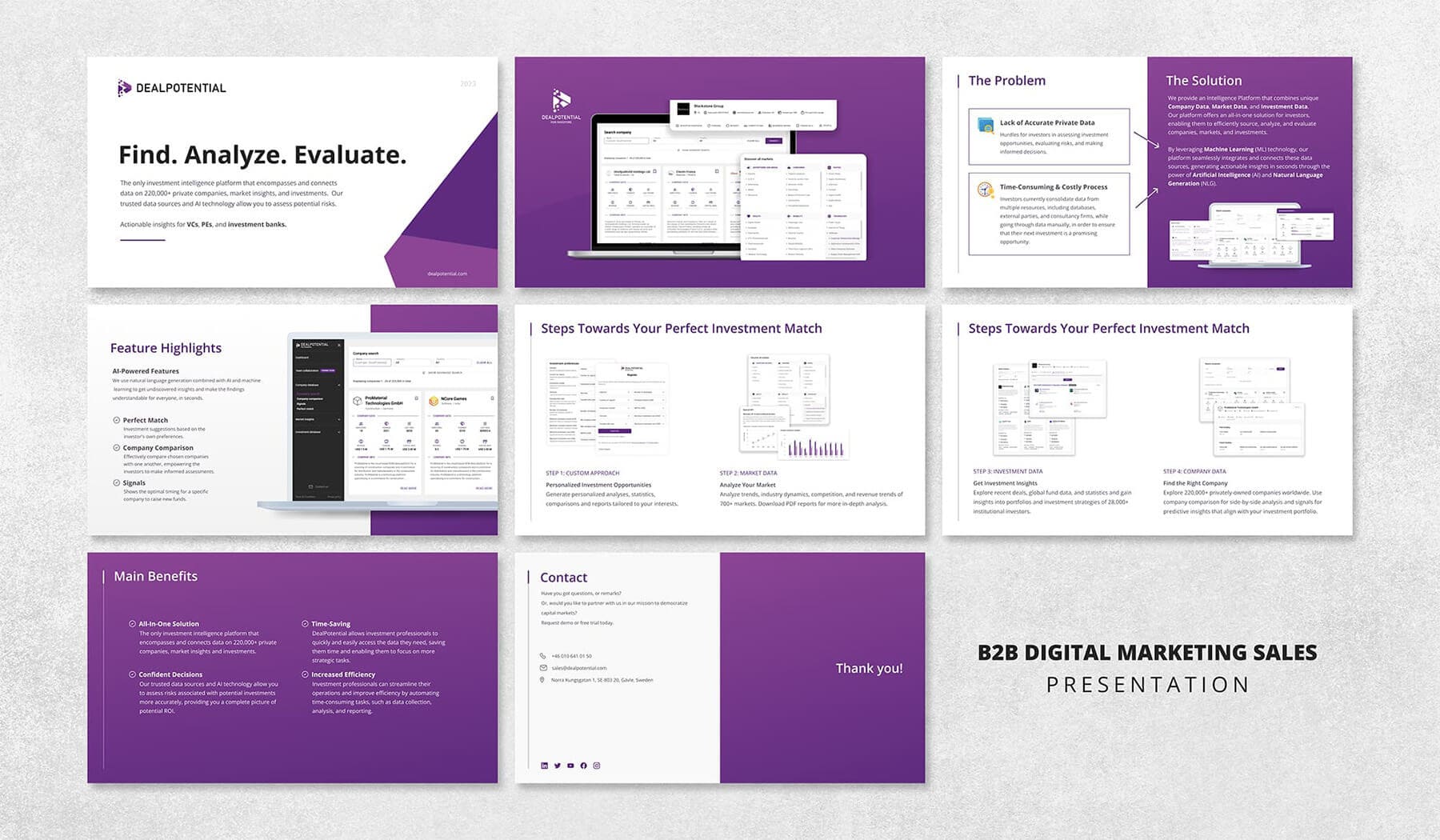
Investing in a professionally designed pitch deck is a strategic asset that empowers your sales team to close deals more effectively.
B2C Marketing Collateral
- Messaging: Leverage emotional appeals and storytelling to connect with consumers on a personal level. Highlight the benefits and lifestyle enhancements your product or service offers, using engaging and relatable language.
- Design: B2C collateral can be more creative and vibrant, using bold colors, eye-catching visuals, and interactive elements to grab attention. The design should evoke emotions and create a sense of desire or urgency.
- Distribution Channels: Social media platforms like Instagram, Facebook, and Pinterest are effective for reaching B2C audiences. Interactive online ads, engaging video content, and influencer collaborations can also drive significant consumer engagement.
Example:
An engaging social media campaign that features user-generated content (UGC), showing real customers enjoying your product, can significantly boost brand visibility and appeal in a B2C context.
Whether targeting businesses or consumers, the secret to effective marketing collateral lies in understanding and addressing the specific needs of your audience. For B2B collateral, it’s about demonstrating value and expertise. For B2C collateral, it’s about creating an emotional connection and offering an enticing lifestyle proposition. Tailoring your approach to these distinct audiences ensures your marketing collateral resonates deeply and drives the desired action.
What Are Some Added Bonus Types of Marketing Collateral?
When you’re ready to go beyond the essentials in marketing, certain types of collateral can give your strategy a sweet boost. These assets are designed to enhance your marketing and sales processes, making them more engaging and effective.
1. Explainer Videos
Explainer videos offer a concise way to showcase what your product or service does. They typically unravel a story that begins with a customer facing a common challenge and demonstrates how your offering provides the perfect solution. By employing visuals like screenshots and screen shares, these videos highlight key features and benefits. Ideal placements for these videos include landing pages, homepages, YouTube, and social media platforms.
2. Branded Merchandise
Branded merchandise, or swag, doesn’t have to break the bank. Items like pens and mugs adorned with your logo can be cost-effective. They’re memorable tokens that often stick around in customers’ lives for years, providing repeated exposure and solidifying brand recognition.
3. Customer Welcome Kits
Welcome kits are a specialized type of branded merchandise, offering a more curated experience. These kits, containing thoughtful gifts, are a way to warmly greet new clients. By starting your relationship on a positive note, you can forge connections that enhance customer loyalty and long-term satisfaction.
4. Review Request Emails
Beyond standard email templates and testimonials, consider adding thank-you emails that prompt customer feedback and reviews. This collateral helps you continuously gather fresh insights and testimonials, crucial for refining your offerings and showcasing social proof.
5. Customized Graphics
To maintain your brand’s visual identity while standing out, invest in original graphics for use in blog posts, social media, and more. Consistent branding through varied visual content not only keeps your materials looking fresh but also enhances brand recognition and fosters a stronger connection with your audience.
Incorporating these elements into your marketing mix can elevate your brand presence, engage your audience, and ultimately support your business goals.
Key Components of Effective Marketing Collateral
At its core, successful marketing collateral is built on a foundation of brand consistency, targeted messaging, clear calls-to-action, visual storytelling, useful content, interactive elements, and social proof.
Each of these components plays a crucial role in capturing attention, delivering value, and fostering a deeper connection with your audience.
Let’s explore these elements in detail, accompanied by real-world examples:
1. Brand Consistency: The Foundation of Trust
Brand consistency across all forms of marketing collateral ensures that your audience receives a unified brand experience, reinforcing recognition and trust.
IKEA's catalogs, whether print or digital, consistently showcase the brand's minimalist design and functional products, reinforcing IKEA's identity as a provider of affordable, stylish home solutions.
How a Logo Forms the Foundation of Your Brand
A logo encapsulates the essence of your business and sets the stage for your brand’s identity. Serving as a visual cornerstone, a well-crafted logo plays several roles in branding:
First Impression: Your logo is often the first interaction potential customers have with your brand. It can instantly convey professionalism, trustworthiness, and the unique personality of your company.
Consistency Across Platforms: Whether it’s on your business cards, website, or social media, a consistent logo ensures that your brand is easily recognizable no matter where it appears. This consistency builds trust and reliability.
Emotional Connection: A thoughtfully designed logo can evoke emotions that align with your brand values. For instance, consider how the playful apple icon of Apple Inc. denotes innovation and simplicity.
Differentiation: In a crowded market, your logo helps distinguish your business from competitors. A memorable and unique design ensures that your company stays top-of-mind when consumers are choosing products or services.
Communication of Core Values: Your logo can communicate what your business stands for, whether it’s sustainability, luxury, or cutting-edge technology. This implicit messaging helps in reinforcing the narrative you want to build around your brand.
In essence, a logo is a core branding tool that not only reflects your business’s identity but also reinforces it across all customer touchpoints. Designing a logo that aligns with your brand’s mission and values is vital for creating lasting impressions.
Dive Deeper
SMB Branding and Design Essentials
Interested in enhancing your brand’s impact through consistency?
Check out our blog on Small Business Branding and Design Essentials for actionable insights and strategies to elevate your brand identity.
2. Targeted Messaging: Speaking Directly to Your Audience
Crafting messages that resonate with your specific audience segments can significantly increase engagement and conversion rates.
Spotify's personalized playlists use data analytics to create targeted messaging that resonates with individual users' music preferences, encouraging more frequent and prolonged engagement with the app.
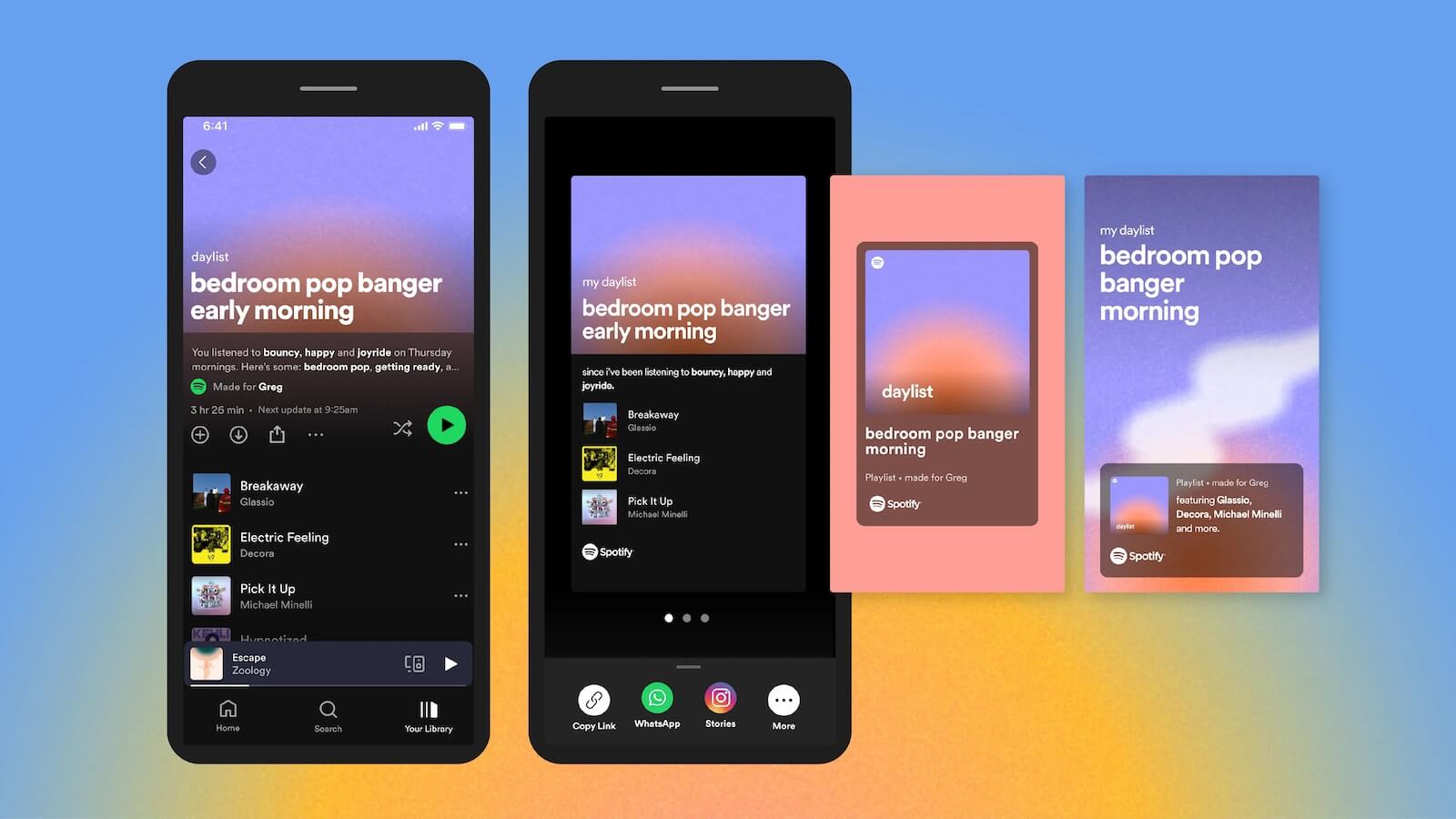
3. Clear Call-to-Action: Guiding the Next Step
A well-crafted call-to-action (CTA) is crucial for converting interest into action. It should be clear, engaging, and convey a sense of urgency or value to prompt the audience to take the next step.
Instead of a generic "Sign Up for Free," consider a CTA that speaks directly to the user's intent or the benefit they will receive. For instance, if your collateral is for a productivity app, a CTA like "Start Saving Time Today" directly addresses the user's potential desire to improve efficiency. This approach makes the CTA more relatable and action-oriented, increasing the likelihood of engagement.
Learn More: For more insights into creating effective CTAs that resonate with your audience, explore Harry Dry’s Marketing Examples on how to craft compelling Landing Pages and Calls-to-Action sections. Discover actionable tips and real-world examples that can transform your marketing collateral from good to unforgettable.
4. Visual Storytelling: Engaging the Senses
Visual storytelling leverages images, videos, and other visual elements to tell a story about your brand or product, engaging the audience’s senses and emotions.
Apple's product launches use high-quality visuals and narratives to illustrate how their products can enhance lifestyles, making technology both aspirational and accessible.
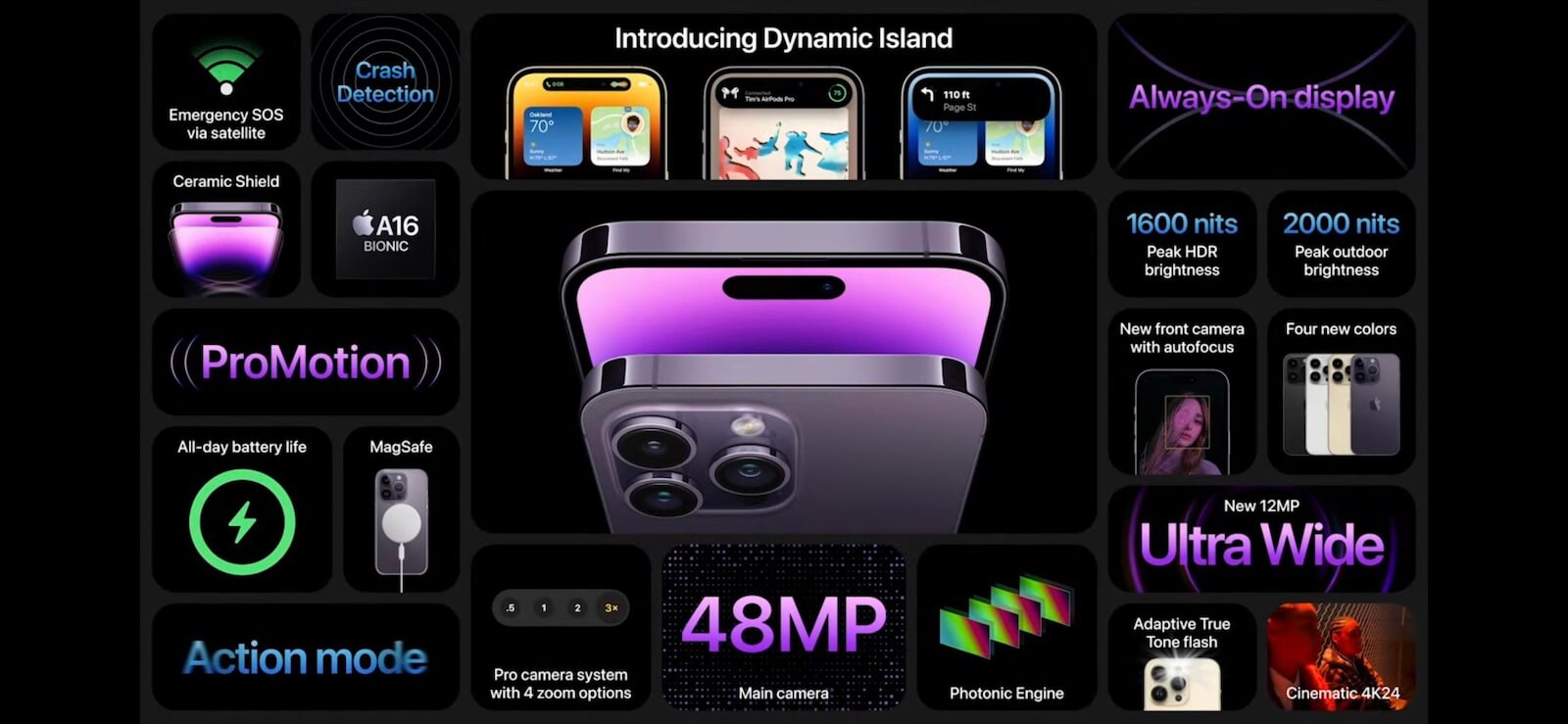
5. Useful Content: Providing Value
In the digital age we’re living in, marketing collateral transcends traditional formats, embracing valuable content hubs as a dynamic way to engage, educate, and convert your audience. By providing real value through how-to guides, industry insights, and actionable advice, you position your brand as a thought leader and a trusted resource.
HubSpot's Content Hub exemplifies this modern approach. It's not just a collection of articles, it's a comprehensive resource for marketing, sales, and customer service insights, offering in-depth guides, templates, and research. This digital collateral strategy positions HubSpot as an indispensable resource in inbound marketing, drawing leads through valuable content and nurturing them into loyal customers. The Content Hub serves as a testament to how providing value can enhance brand loyalty and customer engagement, key goals of any marketing strategy.
Integrating a content hub like HubSpot‘s into your marketing mix not only diversifies your approach but also aligns with the evolving expectations of today’s consumers. It demonstrates how digital collateral can complement traditional materials, creating a holistic brand experience that guides potential customers through every stage of their journey with your brand.
6. Interactive Elements: Creating Engaging Experiences
Incorporating interactive elements into your marketing collateral can transform passive observers into active participants, creating a more engaging and memorable brand experience.
Nike's AR sneaker try-on feature in its app provides a fun, interactive shopping experience, allowing customers to see how shoes look on their feet without leaving home.
7. Social Proof: Leveraging Community Trust
Social proof, such as customer testimonials, reviews, or user-generated content (UGC), can validate your brand’s claims and build trust with potential customers.
TripAdvisor's extensive collection of user reviews and ratings serves as powerful social proof, helping travelers make informed decisions based on the experiences of others.
By systematically incorporating these key components into your marketing collateral, you can create a suite of materials that looks great, performs effectively, drives engagement, builds brand loyalty, and achieves your marketing objectives.
Must-Have Marketing Collaterals for Every Business

As we go deeper into the anatomy of impactful marketing collateral, it’s crucial to shape your strategy to fit the specific needs and challenges of your business’s stage. The right mix of marketing collaterals can make all the difference.
Here’s a breakdown of must-have marketing collaterals for startups, SMEs, and established businesses, along with strategic insights for B2B companies.
Marketing Collaterals for Startups and SMEs
Startups and small to medium-sized enterprises (SMEs) need to focus on building brand awareness and establishing trust. Essential marketing collateral includes:
- Professional Website: Your online identity and first point of contact for many customers. Ensure it’s visually appealing, user-friendly, and optimized for search engines.
- Social Media Presence: Essential for engaging with your audience and building community. Tailor your content to each platform to maximize engagement.
- Email Marketing Campaigns: Direct and cost-effective way to communicate with your audience. Use it for promotions, updates, and nurturing customer relationships.
- Informative Blog Posts: Establish your expertise and improve your SEO. Cover topics that are relevant to your audience and provide value.
- Visually Appealing Infographics: Great for simplifying complex information and increasing shareability on social media.
Advanced Collateral for Established Businesses
As your business grows, your marketing collateral should evolve to deepen customer relationships and reinforce brand loyalty:
- Annual Reports: Share your achievements and vision for the future. This is key for stakeholders, including investors, employees, and customers.
- Investor Presentations: Keep your investors informed and engaged with your business’s progress and potential.
- Sustainability Statements: Demonstrate your commitment to ethical practices and sustainability. This is increasingly important to consumers and partners alike.
- Research and Development Reports: Showcase your innovation and commitment to advancing your industry. Crafting original research reports and data projects is an excellent strategy because it delivers valuable insights to your target audience. These reports are also engaging, capturing attention while establishing your authority.
Such reports act as a magnet for backlinks, enhancing your website’s SEO and driving more traffic. When your audience finds the content valuable, they are more likely to share it, increasing your reach and credibility.
Next-Level Marketing Collateral
For businesses ready to push boundaries, consider integrating advanced strategies that require creativity and commitment:
- Podcasts: Although everyone seems to have one these days, podcasts remain a popular format due to their flexibility and ability to reach niche audiences. They demand a lot of work but can significantly amplify your brand’s voice and reach.
- Reports and Research Projects: Generating original research reports and data projects can position your business as an industry leader. These are not only informative and engaging but also serve as excellent link magnets for your website.
- Branded Community: Building a branded community on platforms like Slack or Discord can be labor-intensive but highly rewarding. According to industry research, a vast majority of organizations believe their community efforts have helped achieve business objectives.
B2B Marketing Collateral
For businesses operating in the B2B space, establishing credibility and demonstrating value is key:
- Case Studies: Share success stories of how your products or services have solved specific client problems. This tangible proof of your capabilities can be persuasive in the decision-making process.
- Whitepapers: Provide in-depth analysis of industry trends, challenges, and solutions. Whitepapers position your business as a thought leader and a reliable source of valuable information.
- Ebooks: Offer comprehensive insights into industry-specific topics, showcasing your expertise and providing valuable resources to potential clients. Ebooks are an excellent way to delve deeper into subjects that matter to your audience, reinforcing your position as an industry leader.
- Product Data Sheets and Brochures: Present the features, benefits, and specifications of your offerings clearly and concisely. These materials are essential for prospects at the consideration stage, helping them understand exactly what you offer and why it’s superior.
- Webinars and Online Workshops: Engage your audience with live or recorded sessions that educate them about industry topics or demonstrate the use of your products. This interactive format educates and builds a direct relationship with potential clients.
- Interactive Tools: Develop tools such as ROI calculators or product configurators that allow prospects to explore the benefits of your solutions interactively. These tools help in personalizing the experience for potential clients, making the value of your offerings more tangible.
- FAQ Documents: Compile answers to frequently asked questions about your products, services, or industry. An accessible FAQ document can expedite the decision-making process by addressing common concerns and demonstrating your commitment to transparency and customer support.
By incorporating these next-level strategies alongside foundational marketing collateral, businesses can effectively engage their audience and drive growth in a competitive landscape.
When to Create Landing Pages for Your Business
Landing pages are essential components in your digital marketing toolkit, but when exactly should you craft one? Here’s a guide on when to develop these targeted pages to maximize your marketing efforts.
1. Running Paid Advertising Campaigns
Whenever you’re investing in paid advertising, whether it’s on Google, Facebook, or other platforms, having dedicated landing pages is crucial. These pages ensure that visitors arriving from your ads are greeted with relevant, campaign-specific information that increases conversion rates.
2. Offering Downloadable Content
If you offer resources like whitepapers, e-books, or guides, create landing pages to facilitate these downloads. This setup helps collect visitor information, such as email addresses, in exchange for valuable content—nurturing your leads effectively.
3. Launching a New Product or Service
Anytime a new product or service hits the market, a landing page dedicated to its launch can capture interest and drive early sales. Make sure your page highlights unique features and benefits to entice potential customers.
4. Hosting Webinars or Events
For businesses planning virtual or in-person events, landing pages play a vital role in registration. They can outline event details, guest speakers, and key takeaways to encourage sign-ups and attendance.
5. Running Special Promotions
Offering a limited-time promotion? Direct traffic from your emails or social media ads to a landing page. Specific deals deserve a tailored, succinct presentation to convert browsers into buyers quickly.
Remember, the most effective marketing collateral doesn’t exist in isolation. It should be a cohesive part of your overall marketing strategy, aligned with your brand’s voice, values, and goals. Regularly review and update your collateral to ensure it remains relevant and continues to resonate with your evolving audience.
What Should a One-Pager Collateral Include?
A well-crafted one-pager serves as a powerful tool to give a swift yet comprehensive snapshot of your offerings. Here’s what you should include to maximize its impact:
Product or Service Overview
Begin with a concise summary of your products or services. Use clear and engaging language that highlights their key benefits and unique selling points.Customer Testimonial
Incorporate a compelling testimonial from a satisfied customer. This adds credibility and builds trust with potential clients.Call to Action
Clearly guide the reader on what steps to take next. Whether it’s to contact you, visit your website, or schedule a consultation, make sure the next steps are unmistakably laid out.Visual Appeal
Ensure the document is attractively designed and aligned with your brand’s identity. Use visuals, colors, and fonts that make the document not only eye-catching but also easy to read.Easy-to-Share Format
Create the one-pager in a universal format like a PDF. This ensures it can be easily distributed digitally or printed for in-person events, such as trade shows.
By integrating these elements, your one-pager will effectively communicate the essence of your business and engage potential customers with a clear path to follow.
How Customer Welcome Kits Elevate Customer Relationships
First Impressions Matter
When a new customer joins your brand’s journey, a thoughtfully curated welcome kit can set a positive tone from the outset. By gifting a well-designed package, you show appreciation, making the customer feel valued right from the start.
Creating a Memorable Experience
Imagine opening a beautifully wrapped gift. It’s an experience that sticks with you. Customer welcome kits create that memorable moment, instilling a sense of pride and belonging in your customers.
Building Emotional Connections
Beyond tangible items, welcome kits foster emotional bonds. Customers are more likely to engage with and remain loyal to brands that acknowledge them personally. This emotional connection can nurture brand advocacy over time.
Reinforcing Brand Values
These kits can also be a subtle reiteration of your brand’s values. Including eco-friendly products or items aligning with your brand ethos can underscore what you stand for, encouraging customers to align with your mission.
Driving Long-Term Loyalty
When executed well, a welcome kit is not just a gift but an investment in the long-term relationship with your clients. It reinforces loyalty and enhances your brand’s image, leading to sustained customer satisfaction and increased lifetime value.
Marketing Collateral Design: Best Practices
Crafting marketing collateral design that resonates with your audience demands aesthetic appeal and strategic design decisions that align with your brand’s goals and audience’s needs. Below, we cover some of the design principles, offering actionable insights to push your marketing materials from good to remembered.
Core Design Strategies
Visual Identity Reinforcement
- Actionable Insight: Create a brand style guide if you haven’t already. This should detail your color palette (with exact hex codes), typography (font names and usage guidelines), and logo usage (including size and placement). Apply these guidelines consistently across all collateral to solidify your brand identity.
- Tool Suggestion: Use tools like Canva or Adobe Express, which allow you to save your brand’s color scheme and fonts, making consistent application easier across designs.
Maximizing Clarity and Impact
- Actionable Insight: For each piece of collateral, define the single most important message you want to convey. Use the “Z” or “F” layout principle in your designs to guide the viewer’s eye to this key message, supported by compelling visuals and minimal text.
- Tool Suggestion: Figma offers grid and layout tools to help plan your design flow according to these reading patterns.
Elevating Imagery
- Actionable Insight: Invest in custom photography or high-quality stock images that align with your brand’s narrative. When using text over images, ensure there’s high contrast for readability.
- Resource Suggestion: Unsplash and Shutterstock provide extensive libraries of high-quality images. Use photo editing software like Adobe Photoshop to adjust contrast and overlay text effectively.
Engagement Through Layouts
- Actionable Insight: Design with the end medium in mind. For print, consider the paper stock and finish; for digital, design for interactivity. For example, incorporate QR codes in print materials that lead to digital experiences, bridging the gap between offline and online engagement.
- Tool Suggestion: QR Code Generator for creating custom QR codes, and InVision for prototyping interactive digital designs.
Design Tips for Print Marketing Collateral
When designing print marketing collateral, it’s crucial to apply your brand attributes consistently across all materials. This not only reinforces brand recognition but also ensures that your message is clear and cohesive. For instance, if your brand is associated with being eco-friendly, incorporating green and brown colors can subtly convey this attribute.
Typography plays a significant role in print design. A professional brand might opt for a clean, modern font, while a brand that’s all about fun could choose more playful typefaces.
Consistency is key in print collateral design. From colors and shapes to fonts and patterns, every detail contributes to the overall brand experience.
Here are a few design tips to keep in mind:
- Use high-quality images and graphics to make your print materials stand out.
- Ensure that your contact information is clear and easy to find.
- Consider the paper quality and finishing touches, as they can greatly enhance the perceived value of your collateral.
- When selecting paper for print materials, consider the weight, texture, and finishing touches. Heavier, textured papers convey luxury, while lighter, smoother papers are cost-effective for mass distribution. Always request samples before finalizing.
- Moo and Vistaprint offer sample packs and customization options to experiment with different paper qualities and finishes.
- Keep your design simple and uncluttered for better readability and impact.
Design Tips for Digital Marketing Collateral
When designing digital marketing collateral, visual appeal is paramount. Eye-catching visuals not only grab attention but also enhance the message you’re trying to convey. Use vibrant colors, high-quality images, and engaging layouts to make your digital assets stand out.
Consistency across different platforms ensures that your brand is easily recognizable. This involves using the same logos, color schemes, and fonts throughout all your digital collateral. A unified visual identity strengthens your brand’s presence and aids in building trust with your audience.
How Do Brand Colors Contribute to Marketing and Brand Recognition?
Brand colors play a pivotal role in marketing by shaping how audiences perceive and recall a brand. These colors are more than just aesthetic choices, they’re foundational elements that enhance recognition and loyalty among consumers.
Enhancing Recognition
Studies suggest that using a consistent color palette can boost brand recognition significantly. For instance, brands like Coca-Cola and Starbucks are instantly recognizable due to their signature red and green tones, respectively. This instant recognition translates to a stronger presence in the market, making it easier for customers to identify and remember your brand.
Building Emotional Connections
Colors evoke emotions and can influence consumer behavior. For example, blue often conveys trust and professionalism, which is why many tech companies like IBM and Dell utilize it in their branding. By strategically selecting colors that align with your brand’s message and values, you can create a more profound emotional connection with your audience.
Facilitating Brand Consistency
Consistency is key in marketing, and color palettes help maintain this across all platforms. Whether on social media, packaging, or advertisements, having a unified set of colors ensures a cohesive brand experience. This uniformity not only strengthens recognition but also builds consumer trust, as it conveys reliability and stability.
Tips for Choosing Brand Colors
If you’re unsure about which colors to choose, consider exploring color psychology to understand how different hues can align with your brand’s goals. Additionally, test how these colors perform across various media and demographics to ensure they resonate well with your target audience.
In summary, brand colors are indispensable in marketing for establishing strong recognition and emotional connections, which ultimately drive customer loyalty.
Read more about Small Business Branding and
Design Essentials.
Keep it actionable
Your digital content should not only inform but also encourage the user to take action. Whether it's signing up for a newsletter or making a purchase, clear calls-to-action (CTAs) are crucial.
Remember to define and track your goals. Setting specific objectives for your digital marketing collateral will guide its creation and help you select the most effective channels for distribution.
- Leverage analytics to test different designs. A/B test email templates or landing pages to see which designs drive more engagement or conversions.
- Tool Suggestion: Google Analytics for website insights and Mailchimp for email campaign analytics can guide your design optimizations.
Conclusion
In conclusion, marketing collateral plays an essential role in the success of any business by effectively communicating brand messages, engaging target audiences, and driving conversions. From print to digital collateral, each type serves a unique purpose in the marketing strategy. By incorporating key components, creating impactful designs, and following best practices, businesses can create compelling marketing collateral that resonates with their audience. As the marketing landscape continues to evolve, staying updated on trends and leveraging innovative ideas will be essential for maximizing the impact of marketing collateral.
Remember, in the realm of marketing, collateral is more than just materials—it’s your brand’s handshake with the world.
Make it count.
Start Growing
Revamp Your Marketing Collateral
Looking to revamp your marketing collateral but not sure where to start?
Our team is here to help. From design consultation to content creation, we offer services tailored to bring your brand’s vision to life.
Contact us today to learn more and take the first step towards unforgettable marketing collateral.
Frequently Asked Questions
Marketing collateral serves as promotional material used to communicate with customers and prospects, showcasing products or services and reinforcing brand identity.
Key elements include clear messaging, engaging visuals, consistent branding, and a call-to-action to drive desired customer behavior.
To ensure brand consistency, use the same color palette, typography, logo placement, and messaging tone across all collateral materials.
Examples include ebooks, infographics, email templates, videos, social media graphics, and interactive web content.
Tailoring collateral to the target audience helps increase relevance and engagement, leading to better communication and conversion rates.
You can measure effectiveness through metrics like engagement rates, click-through rates, conversion rates, and feedback from customers and sales teams.
Start by identifying the specific challenge—whether it's maintaining brand consistency, ensuring readability, or creating engaging visuals. Utilize design principles like hierarchy and contrast, and don't hesitate to seek inspiration from successful examples in your industry. Tools like Canva offer design tutorials and templates that can help simplify the process.
Leverage free or low-cost design tools like Canva or Adobe Express, which offer professional templates. For digital collateral, focus on content that can be easily shared and updated, such as social media posts or email newsletters. When it comes to print, prioritize essential items and look for printing services that offer discounts for bulk orders.
To measure ROI, start by setting clear objectives for each piece of collateral and track metrics that align with those goals. For digital collateral, use analytics tools to track engagement, conversions, and website traffic attributed to specific pieces. For print collateral, use QR codes or unique URLs to track how many leads or sales are generated from each piece.
Regularly review and update your collateral to reflect any changes in your products, services, or brand messaging. Establish a schedule for reviewing your marketing materials at least once a quarter. For digital collateral, take advantage of the ability to make real-time updates. For print, consider ordering smaller quantities to allow for more frequent updates.
Share :

